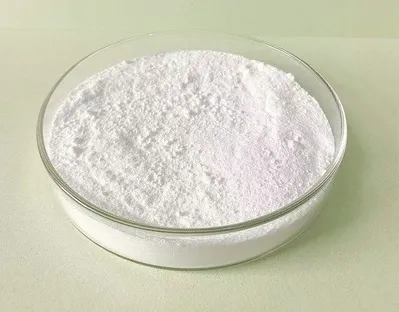
Analysis of Chemical Properties and Applications of CAS No 1305 62 0
Understanding CAS Number 1305-62-0 A Comprehensive Overview
CAS Number 1305-62-0 corresponds to a chemical substance commonly known as calcium oxide, often referred to as quicklime. This compound has significant industrial applications, and understanding its properties, production, and uses is essential for various fields ranging from construction to environmental science.
Chemical Properties and Structure
Calcium oxide (CaO) is an inorganic compound, characterized by its white, caustic solid appearance. It has a high melting point of approximately 2,613 degrees Celsius and a boiling point of around 2,850 degrees Celsius. It is a strong base and reacts vigorously with water, generating calcium hydroxide, which is known for its strong alkaline properties. The reaction with water is exothermic, producing heat
\[ \text{CaO} + \text{H}_2\text{O} \rightarrow \text{Ca(OH)}_2 + \text{Heat} \]
The resulting calcium hydroxide is used in a variety of applications, including water treatment and as a pH regulator.
Production and Sources
Calcium oxide is produced through the thermal decomposition of calcium carbonate (CaCO₃) in a process known as calcination. This process occurs at high temperatures, typically above 900 degrees Celsius
\[ \text{CaCO}_3 \rightarrow \text{CaO} + \text{CO}_2 \]
Limestone, which is primarily composed of calcium carbonate, is the main source of calcium oxide. The calcination of limestone not only produces calcium oxide but also releases carbon dioxide as a by-product, contributing to greenhouse gas emissions. Therefore, there is ongoing research into more sustainable methods for producing calcium oxide or using alternative materials.
Industrial Applications
Calcium oxide has a myriad of industrial applications
cas no 1305 62 0

1. Construction It is widely used in the construction industry as a key ingredient in cement and mortars. When mixed with water, it helps in the setting and hardening processes, contributing to the structural integrity of buildings.
2. Steel Manufacturing In steelmaking, calcium oxide acts as a flux, helping to remove impurities from the metal. It aids in the formation of slag, which facilitates the separation of unwanted materials from molten steel.
3. Environmental Uses Calcium oxide is employed in the treatment of waste and air pollution. It can neutralize acidic waste and absorb sulfur dioxide from flue gases, thereby reducing harmful emissions.
4. Food Industry In small quantities, calcium oxide is used in the food industry as a food additive, primarily for preservation and as a firming agent in canned vegetables and fruits.
5. Agriculture It plays a significant role in the agricultural sector as a soil conditioner, helping to balance soil pH and improve crop yields.
Health and Safety Considerations
While calcium oxide is integral to many industries, it poses health and safety risks. Direct contact can cause severe skin burns, respiratory issues, and eye damage. Proper handling and safety protocols are essential when working with this compound. Personal protective equipment (PPE) such as gloves, goggles, and masks are recommended to mitigate exposure risks.
Environmental Impact
The production and use of calcium oxide have environmental implications, particularly regarding carbon dioxide emissions during its manufacturing process. As industries increasingly focus on sustainability, alternative methods of production and the recycling of calcium-based materials are gaining attention. Innovations in carbon capture technologies may also provide pathways to reduce the carbon footprint associated with calcium oxide production.
Conclusion
CAS Number 1305-62-0 signifies calcium oxide, a vital compound in various sectors. Its wide-ranging applications underscore its importance in modern industry, but they also highlight the need for careful handling and consideration of environmental impacts. As technology and practices evolve, calcium oxide will continue to play a crucial role while also prompting discussions about sustainable practices within the chemical industry. Understanding its properties, benefits, and risks is essential for anyone working with or studying this significant chemical compound.
Share
-
Premium Fly Ash Powder: Ideal Admixture for Strong ConcreteNewsAug.07,2025
-
Premium Pine Bark Mulch: Nuggets & Shredded StylesNewsAug.06,2025
-
Premium Kaolin Powder | High-Purity Mineral SolutionNewsAug.05,2025
-
Premium Glass Sand Solutions | High Purity SupplyNewsAug.03,2025
-
Natural Premium Bentonite Cat Litter - Superior ClumpingNewsJul.31,2025
-
Premium Resin Coated Sand - High Heat Resistance CastingNewsJul.31,2025






